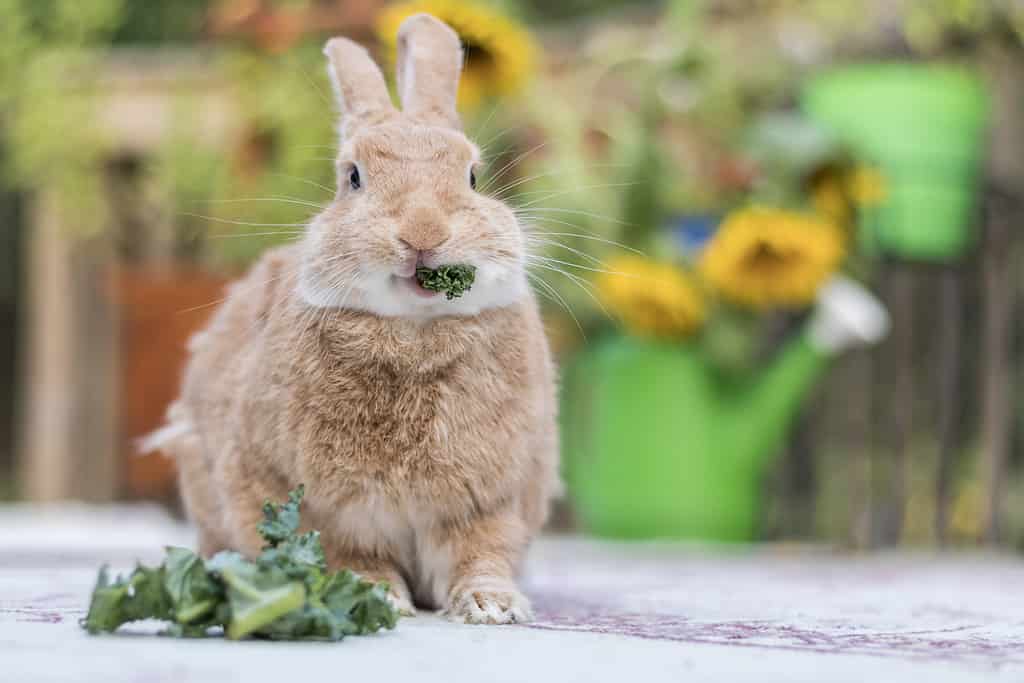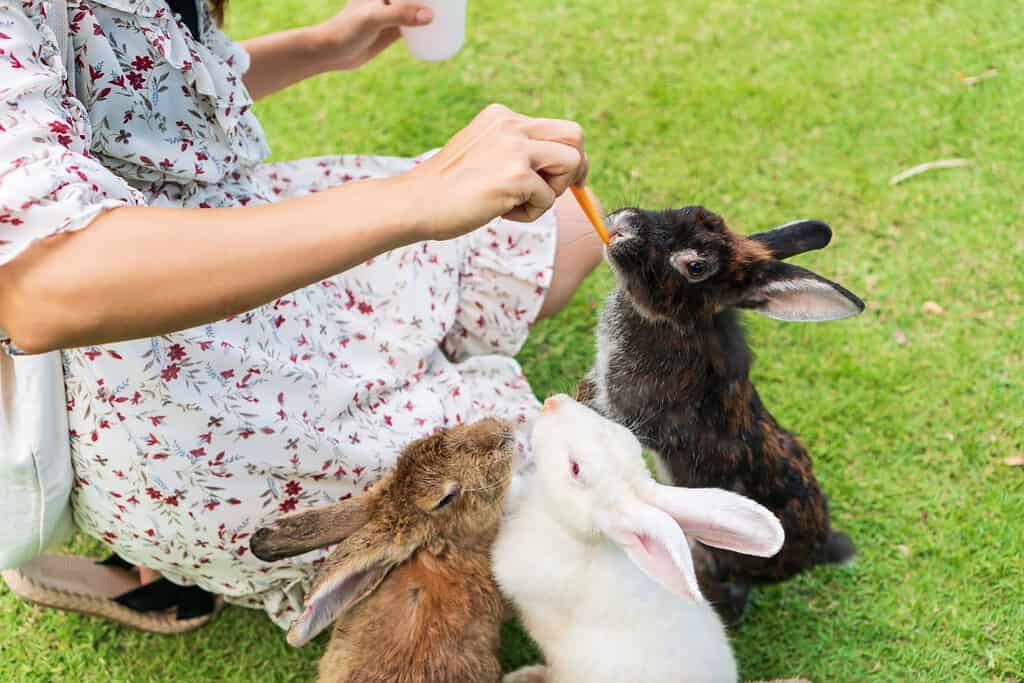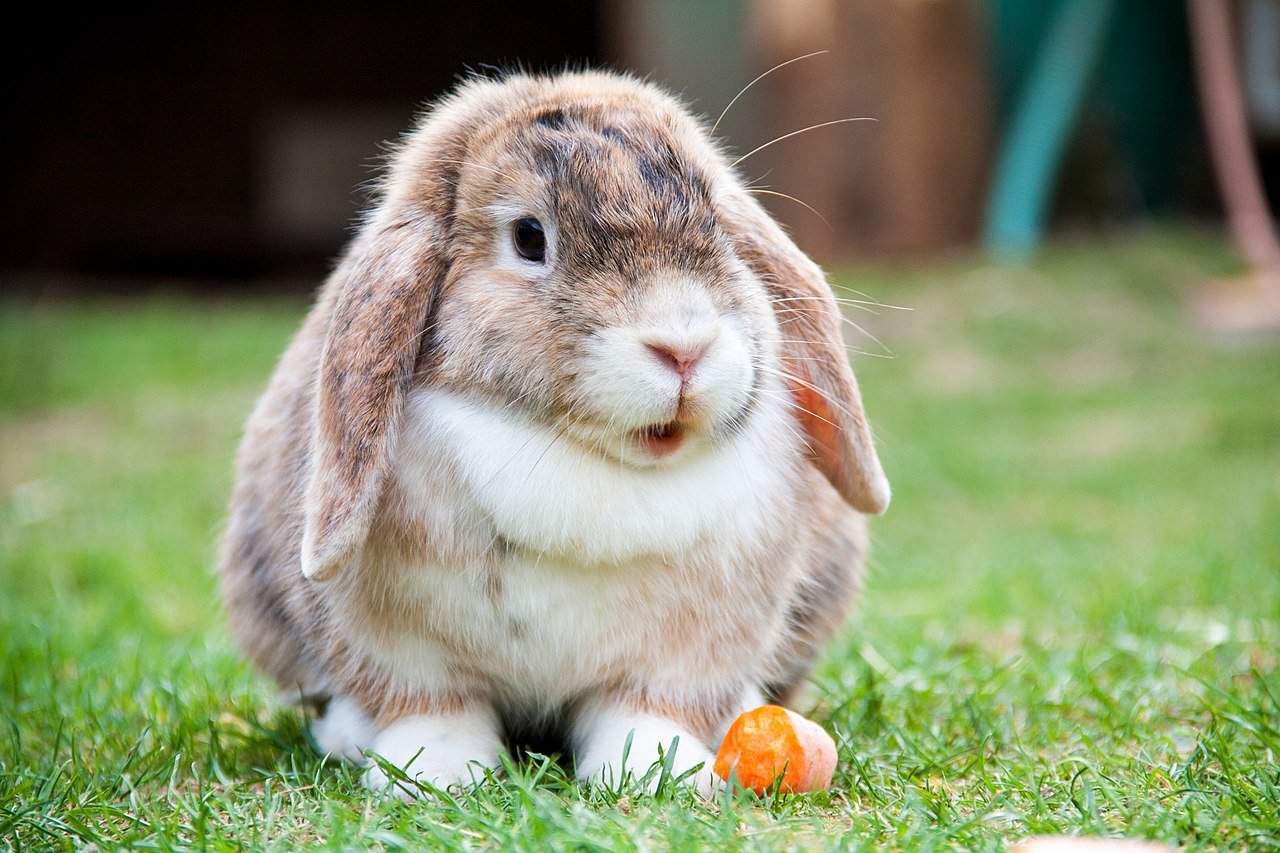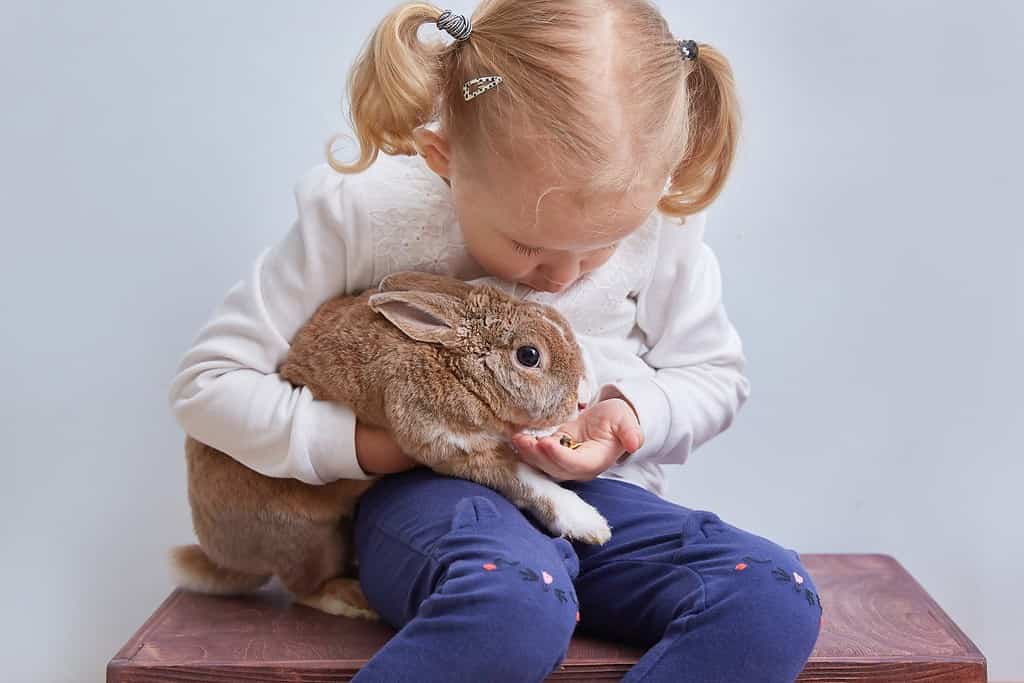Rabbits have become the third most popular pet in the United States. Intelligent and highly social, they can form deep bonds with their owners. They are quieter than dogs and require a gentle, calm environment to feel safe. However, they can be as playful as a puppy. Just like dogs, pet bunnies are treat-motivated, which means they’re easy to train.
If you’d like your pet rabbit to come to you when called, it just involves a little bit of work and a lot of patience. Besides being a fun trick to teach your rabbit, coming when called can save them from a possibly dangerous situation. Read on for eight steps to take to successfully get a bunny to come to you.
1. Encourage Your Bunny to Trust You

Bunnies have strong fear instincts and will need time and patience before building a bond with their humans.
©Rabbitti/iStock via Getty Images
Rabbits are prey animals with a strong fear drive, which helps them survive in the wild. In nature, bunnies need to watch out for foxes, cats, coyotes, dogs, and birds of prey. In your home, it’s important to establish trust with your pet bunny so that your pet feels confident and secure when you are around. Before you begin training, the first step is to take time to just hang out with your bunny, offering treats and letting him explore his home.
2. Don’t Chase or Trap Your Bunny

It takes time to build trust with your pet rabbit.
©ansoz/Shutterstock.com
To get your rabbit to trust you, you don’t want to chase, trap, or hold your bunny. When you hold them, they feel trapped and afraid. If it’s at all possible, don’t hold your bunny until you gain his trust. Don’t chase after your bunny or trap them. This will set their prey drive into high gear and you will have a much harder time in building your bond.
According to the nonprofit organization, Rabbit.org, it may take a few months for your rabbit to adjust to a new home and new people. Unlike a puppy or a kitty, a rabbit is going to need plenty of time to build a bond with its owner.
3. Begin by Quietly Sitting Near Your Bunny

Sit near your bunny each day and wait for your bunny to feel comfortable approaching you.
©Farhad Ibrahimzade/Shutterstock.com
Before you can get your bunny to come to you when you call her name, you will need to spend time just sitting near your bunny and letting your pet approach you. Try leaving your rabbit’s enclosure open and sit a little ways away. Do this every day for at least 15 to 30 minutes, but it can be longer.
You may even want to look away or turn your back to your bunny’s enclosure. Rabbits don’t like to feel watched. With patience, eventually, your pet will approach you to find out who and what you are. Be quiet and keep your movements slow. Your bunny may flinch if you make a sudden move.
4. Keep Training Sessions Short

It’s best to train your rabbit with short and consistent sessions.
©UNIKYLUCKK/Shutterstock.com
Once you’ve gained your bunny’s trust, you are ready to begin training. It’s good to be consistent and train every day, but you don’t want the training sessions to be long. Try to aim for 15 minutes or less. Short and consistent sessions are the key.
5. Offer Treats When Your Bunny Comes to You

Use positive reinforcement to train your bunny to come to you.
©Opat Suvi/Shutterstock.com
Use positive reinforcement to train your rabbit. Start slowly by giving your bunny treats when she approaches you. Use small pieces of fruit or vegetables. Extend your hand with the treat in it and wait for your bunny to come to you and take it from your hand. Don’t make a move, just let the rabbit approach you. This may take some time and you will need to be patient.
6. Start Saying Your Bunny’s Name as You Give Them a Treat

Use the same cue each time to call your bunny.
©Choco'Love/Shutterstock.com
In this step, you will need to decide what cue you want to use to call your bunny. It doesn’t have to be the rabbit’s name. It could be the word “come” or a sound, it’s up to you. Just remember to use the same cue every single time. Start by saying your cue as you give your bunny a treat. Keep this up for about a week before moving to the next step.
7. Stand a Short Distance Away and Call the Bunny to You

Stand near your rabbit and call her rabbit to you.
©Peter Jung / Creative Commons - License
Now you are ready to use your cue and call your bunny to you. Have a treat in hand and reward your bunny when he successfully comes when you call. Be patient, and if this step doesn’t work, you may need to return to step 6 for a bit longer. Try calling your bunny to come several times each day.
8. Congratulations, Now Your Bunny Is Ready to Come to You Without a Treat

Rabbits are intelligent and loving pets.
©Kyttan/Shutterstock.com
For your last step, try calling your bunny to come to you without the use of food. You can reward your bunny with petting and toys. You can still use a treat as a reward occasionally to help reinforce the behavior.
The photo featured at the top of this post is © Sasiistock/ via Getty Images
Thank you for reading! Have some feedback for us? Contact the AZ Animals editorial team.






